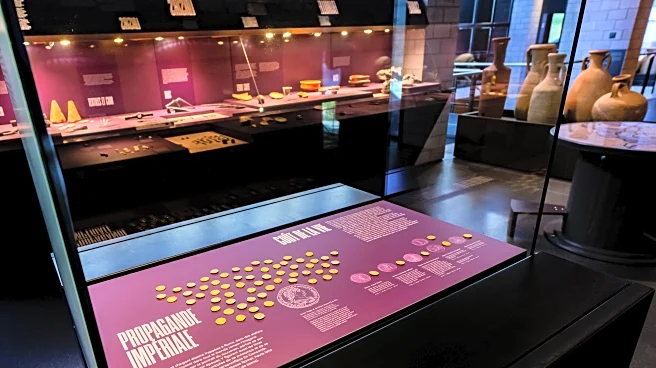What's Happening?
A sophisticated criminal network trafficking stolen cultural goods across Europe has been dismantled, resulting in the arrest of 35 suspects. The operation, coordinated by law enforcement agencies from seven countries, targeted a smuggling ring involved
in selling thousands of ancient artifacts stolen from museums. The investigation revealed over $1 billion in illicit funds linked to antiquities trafficking and money laundering. Authorities conducted 131 searches, seizing more than 3,000 artifacts valued at over 100 million euros.
Why It's Important?
The dismantling of this criminal network highlights the ongoing challenges in protecting cultural heritage from illegal trafficking. The operation underscores the importance of international cooperation in combating organized crime and preserving historical artifacts. The seizure of valuable antiquities prevents their sale on the black market, safeguarding cultural heritage for future generations. This development may lead to stricter regulations and increased vigilance in the art and antiquities market, impacting collectors, museums, and cultural institutions.
What's Next?
Authorities are likely to continue investigations into the network's operations, potentially uncovering further illicit activities and connections. The success of this operation may encourage more collaborative efforts among countries to combat antiquities trafficking. Legal proceedings against the arrested suspects will unfold, with potential implications for international laws governing cultural heritage protection. The case may prompt discussions on enhancing security measures in museums and cultural sites to prevent future thefts.
Beyond the Headlines
The trafficking of stolen antiquities raises ethical and legal questions about the ownership and preservation of cultural heritage. The demand for such artifacts on the black market reflects broader issues of cultural appropriation and exploitation. This case may lead to increased awareness and advocacy for the protection of cultural heritage, encouraging governments and organizations to prioritize conservation efforts. The operation's success highlights the role of technology and intelligence in modern law enforcement.
















